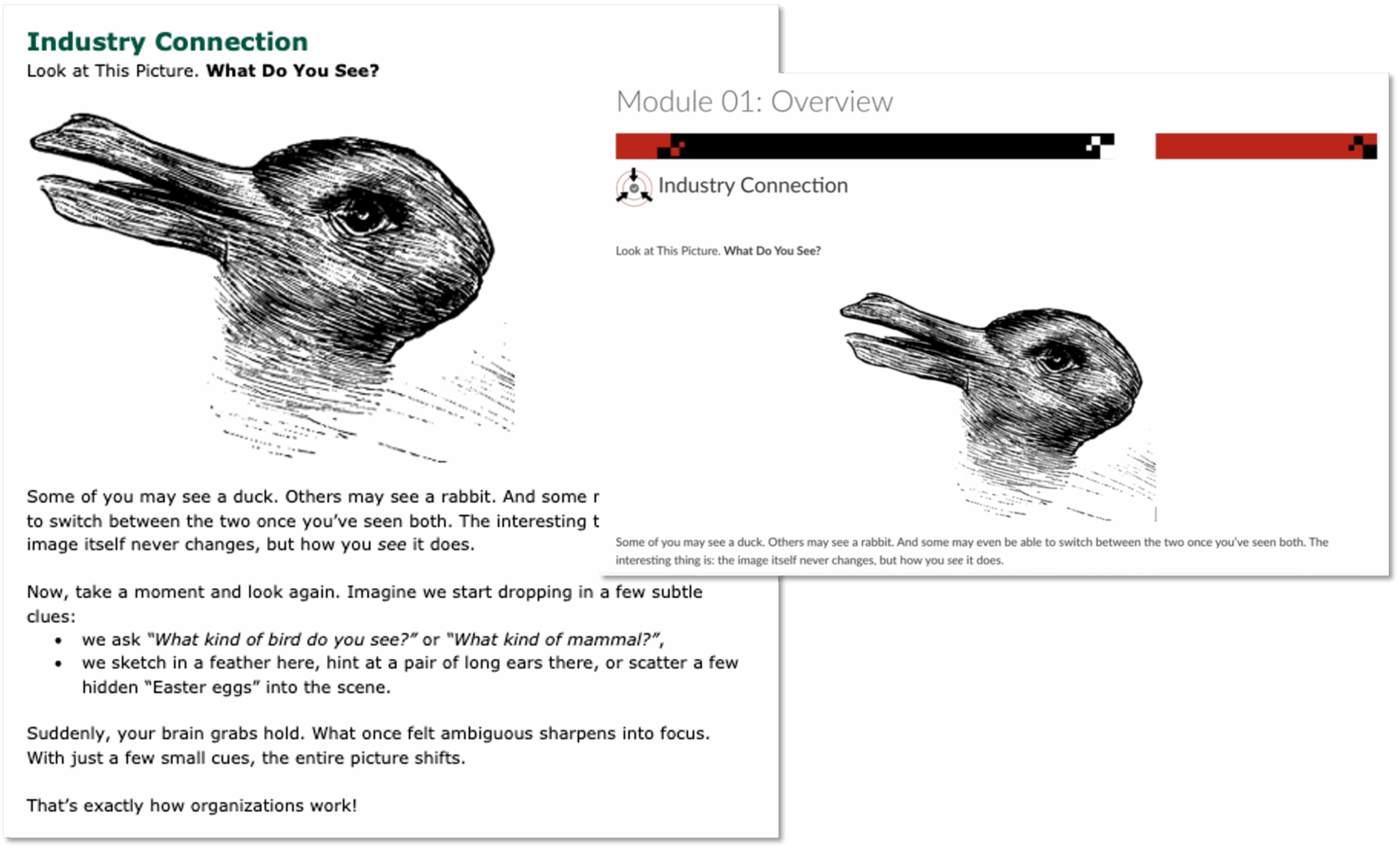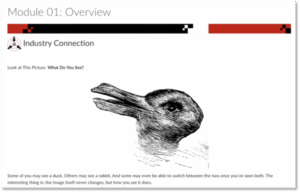- Featured Example: PA 502 - Organizational Behavior
- Course Developer: Dr. Aarn Cao
- Risepoint ID: Anabel Larson
Stories create meaning. In your online course, a well-placed story or metaphor can anchor abstract ideas in lived experience. Whether drawn from a professional anecdote, a familiar image or idea, or a moment of personal insight, engaging stories help learners see themselves in the material. This helps learning stick!
This example from Illinois Tech shows how one course opened with a story that was visual, memorable, and deeply connected to a core course concept.
Design Challenge
As Dr. Cao began to reflect on “Learning Challenges” in Part 1 of the Course Design Guide (Course Planning and Module 1 Design Template), she noted that students can struggle with translating theory into practice.
Dr. Cao wanted to disrupt that challenge immediately by starting the course with a story that invites students to question how they see organizations in the first place!
This image is taken from a Course Design Guide draft in the early days of course development. Here, Dr. Cao noted that students struggled to translate theory into practice! This was a challenge her and her designer, Anabel, focused on throughout their course development process.
Course Vision
In her Course Design Guide’s “Big Idea”, Dr. Cao noted that “In today’s complex public and nonprofit environments, effective leadership requires more than good intentions, it requires insight, strategy, and perspective. This course is designed to help students see organizations in a fundamentally new way.”
To bring that vision to life, she used the recognizable Rabbit and Duck illusion as both a metaphor and engaging story for students. Instead of launching into theory or a textbook definition, Module 1 begins with an unexpected challenge for students: “What do you see?”
The visual metaphor and story sets the stage for the four frame model by making students feel the shift in perspective before they study it.
Executing the Design
In the course design, Dr. Cao’s story appears in in the first page of the first module: Seeing Differently, A Story about Perspective. This uses a combination of strong narrative writing and an accompanying visual:
Key Design Elements:
- Hooks Interest: The image appears at the top of the page at the beginning of the module, promoting curiosity and starting students with an “aha” moment. This experience can engage emotion before cognition.
- Personal Tone: The page is written in the course developer’s voice, using second person (“you”) to bring students into the scene and building trust and connection.
- Extended Metaphor: The story gradually builds complexity as students read. Eventually connecting reflection cues to real organizational dynamics.
- Connection to Course Materials: The page closes by tying the story to a concrete outcome (learning to use the Four Frames model).
- Conceptual Payoff: This isn’t fluff! It’s a memorable example that prepares students to engage with course concepts and apply them to their own life and workplace settings.
Want to Try?
Give these ideas a try during your own course development experience:
- Open your course or a single module with a story, image, or metaphor that invites reflection or personal reframing.
- Use personal or cultural examples that feel familiar but spark new insights.
- Clearly tie the story to a course goal, skill, or professional competency.
- Share anecdotes from your own personal or professional experience and ask students to do the same.





